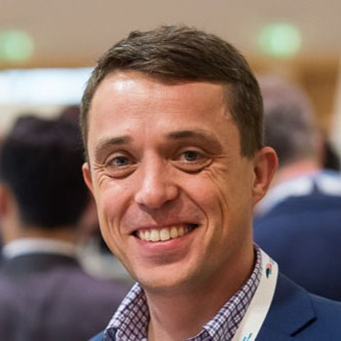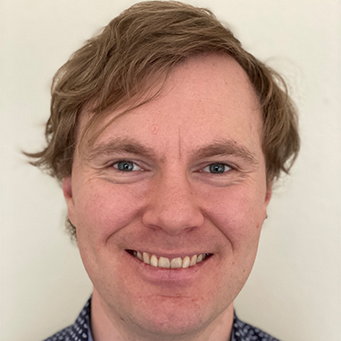With great pleasure we would like to introduce fantastic presenters of plenary lectures, which will take place during the 28th KomPlasTech Conference.
Computational Intelligence based design of Biomaterials
Shubhabrata Datta
SRM Institute of Science and Technology, Kattankulathur, Tamil Nadu, India
 Dr. Shubhabrata Datta, presently Research Professor in the Department of Mechanical Engineering, and Coordinator of Centre for Composites and Advanced Materials at SRM Institute of Science and Technology, Kattankulathur, Tamil Nadu, did his Bachelors, Masters and PhD in Engineering from Indian Institute of Engineering Science and Technology, Shibpur, India (previously known as B.E. College Shibpur) in the field of Metallurgical and Materials Engineering. Prof. Datta has 32 years of teaching and research experience. His research interest is in the domain of materials informatics, composites and biomaterials. Prof. Datta has published more than 170 research papers in journals and peer-reviewed conference proceedings, with one authored and three edited books. Fifteen of his graduate students have been conferred with PhD degree. He was bestowed with the Exchange Scientist Award from Royal Academy of Engineering, UK and worked in the University of Sheffield, UK. He also worked Dept of Materials Science and Engineering, Helsinki University of Technology, Finland, Dept of Materials Science and Engineering, Iowa State University, Ames, USA and Heat Engineering Lab, Dept of Chemical Engineering, Åbo Akademi University, Finland as Visiting Scientist. He is a Fellow of Institution of Engineers (India), Associate Editor, Journal of the Institution of Engineers (India): Series D, and editorial board member of several international journals. Prof. Datta has featured in the list of "World Ranking of Top 2% Scientists" in 2021 database (Published by Stanford University & Elsevier).
Dr. Shubhabrata Datta, presently Research Professor in the Department of Mechanical Engineering, and Coordinator of Centre for Composites and Advanced Materials at SRM Institute of Science and Technology, Kattankulathur, Tamil Nadu, did his Bachelors, Masters and PhD in Engineering from Indian Institute of Engineering Science and Technology, Shibpur, India (previously known as B.E. College Shibpur) in the field of Metallurgical and Materials Engineering. Prof. Datta has 32 years of teaching and research experience. His research interest is in the domain of materials informatics, composites and biomaterials. Prof. Datta has published more than 170 research papers in journals and peer-reviewed conference proceedings, with one authored and three edited books. Fifteen of his graduate students have been conferred with PhD degree. He was bestowed with the Exchange Scientist Award from Royal Academy of Engineering, UK and worked in the University of Sheffield, UK. He also worked Dept of Materials Science and Engineering, Helsinki University of Technology, Finland, Dept of Materials Science and Engineering, Iowa State University, Ames, USA and Heat Engineering Lab, Dept of Chemical Engineering, Åbo Akademi University, Finland as Visiting Scientist. He is a Fellow of Institution of Engineers (India), Associate Editor, Journal of the Institution of Engineers (India): Series D, and editorial board member of several international journals. Prof. Datta has featured in the list of "World Ranking of Top 2% Scientists" in 2021 database (Published by Stanford University & Elsevier).
More information can be found at the following web site
Full-field modelling of recrystallisation - a symbiosis of experimental and numerical investigations
Lukasz Madej
AGH University of Science and Technology, Krakow, Poland
 Lukasz Madej is a full professor and the head of the Industrial Digitalization and Multiscale Modelling Division at the Faculty of Metal Engineering and Industrial Computer Science at AGH University. His research focuses on the development of modern numerical solutions for the industry and, in particular full-field multiscale modelling models for materials science. He is a member of various scientific organisations, e.g., the Polish Association of Computational Mechanics or several Committees of the Polish Academy of Sciences. In 2022 he was elected as a Fellow of the CIRP - The International Academy for Production Engineering. Since 2020 he is also a member of the Board of Directors of the ESAFORM. At the same time, he is editor-in-chief of Computer Methods in Materials Science journal and a member of editorial boards in various academic journals, e.g. Steel Research International, International Journal of Material Forming, Journal of Materials Processing Technology or Production Engineering. He is the author and co-author of more than 250 published works, including 5 books. Besides scientific activities, he is also active in the Polish Forging Association, where he holds the position of vice-president, in the EUROFORGE as an Executive Board member and in the AMDS ArcelorMittal Poland as a metal forming expert.
Lukasz Madej is a full professor and the head of the Industrial Digitalization and Multiscale Modelling Division at the Faculty of Metal Engineering and Industrial Computer Science at AGH University. His research focuses on the development of modern numerical solutions for the industry and, in particular full-field multiscale modelling models for materials science. He is a member of various scientific organisations, e.g., the Polish Association of Computational Mechanics or several Committees of the Polish Academy of Sciences. In 2022 he was elected as a Fellow of the CIRP - The International Academy for Production Engineering. Since 2020 he is also a member of the Board of Directors of the ESAFORM. At the same time, he is editor-in-chief of Computer Methods in Materials Science journal and a member of editorial boards in various academic journals, e.g. Steel Research International, International Journal of Material Forming, Journal of Materials Processing Technology or Production Engineering. He is the author and co-author of more than 250 published works, including 5 books. Besides scientific activities, he is also active in the Polish Forging Association, where he holds the position of vice-president, in the EUROFORGE as an Executive Board member and in the AMDS ArcelorMittal Poland as a metal forming expert.
More information can be found at the following web site
Parallel system for modeling air pollution problems over a complex terrain
Albert Oliver Serra
Institute of Intelligent Systems and Numeric Applications in Engineering, at The University of Las Palmas de Gran Canaria, Spain
 Dr Albert Oliver Serra is an associate professor at the University Institute of Intelligent Systems and Numeric Applications in Engineering, at The University of Las Palmas de Gran Canaria, Spain. His research interest is the application of the finite element method in environmental problems, and particularly in the simulation of air quality and wind fields at the microscale level. He is also working on the generation of tetrahedral adapted meshes for these problems.
Plenary talk will be on a new methodology for solving air pollution problems over a complex terrain. The main contribution of the work is the construction of a parallel system to model the air quality in the local scale, and specially in zones with a complex orography. This system consists of the following parts that are described briefly.
Dr Albert Oliver Serra is an associate professor at the University Institute of Intelligent Systems and Numeric Applications in Engineering, at The University of Las Palmas de Gran Canaria, Spain. His research interest is the application of the finite element method in environmental problems, and particularly in the simulation of air quality and wind fields at the microscale level. He is also working on the generation of tetrahedral adapted meshes for these problems.
Plenary talk will be on a new methodology for solving air pollution problems over a complex terrain. The main contribution of the work is the construction of a parallel system to model the air quality in the local scale, and specially in zones with a complex orography. This system consists of the following parts that are described briefly.
- Adaptive three-dimensional mesh generation - We propose two different strategies to discretize domains defined over complex terrains including several stack geometries, with a minimal user intervention and low computational cost.
- Mass-consistent wind field computation - The mass-consistent model obtains an ambient wind field that takes into account the complex orography.
- Plume rise - The local mesh refinement along the streamlines of the injection of the emission into the ambient wind allows to simulate the influence of the plume initial rise and its development near the emitter.
- Convection-diffusion-reaction equation - An stabilized finite element method is proposed to solve the equation obtaining the values of concentration for all the pollutants in the whole three-dimensional domain.
- Multimesh adaptive scheme - To improve the solution an h-adaptation is used. The proposed methodology uses the necessary mesh resolution to consider the main effects of the physical phenomena that are involved in air pollution process.
[1] Albert Oliver Serra, Gustavo Montero, Rafael Montenegro, Eduardo Rodríguez, José M Escobar, Agustí Pérez-Foguet, Adaptive finite element simulation of stack pollutant emissions over complex terrains, Energy (Elsevier) 49 (2013) 47-60
[2] Albert Oliver Serra, Eduardo Rodríguez, José M Escobar, Gustavo Montero, Mariano Hortal, Javier Calvo, José M Cascón, Rafael Montenegro, Wind forecasting based on the harmonie model and adaptive finite elements, Pure and Applied Geophysics, 172 (2015) 109-120
[3] Krzysztof Podsiadło, Albert Oliver Serra, Anna Paszyńska, Rafael Montenegro, Ian Henriksen, Maciej Paszyński, Keshav Pingali, Parallel graph-grammar-based algorithm for the longest-edge refinement of triangular meshes and the pollution simulations in Lesser Poland area, Engineering with Computers, 37(4) (2021) 3857-3880
More information can be found at the following web site
Stable Finite Element Methods and Engineering Applications
Eirik Valseth
Oden Institute for Computational Engineering and Sciences at The University of Texas at Austin, US
 Eirik Valseth is a research associate in Professor Clint Dawson´s Computational Hydraulics Group in the Oden Institute for Computational Engineering and Sciences at The University of Texas at Austin. Eirik has extensive experience in the application, development, and implementation of stable finite element methods for challenging partial differential equations originating in engineering and science. Since joining the Computational Hydraulics Group in 2020, Eirik has lead projects on the development of novel shallow water equation solvers, modeling tools and techniques for compound flooding, and the development of new finite element model for the operational forecasting hurricane storm surge and compound floods on the Texas Coast. Currently, Eirik is PI and Co-PI for several multi-institution externally funded research projects in the Computational Hydraulics Group and has been awarded multiple large computing grants from the Texas Advanced Computing Center for the Frontera supercomputer. In 2022, he was awarded the prestigious Marie Sklodowska-Curie grant and worked at The University of Oslo and Simula Research Laboratory in Oslo, Norway before starting a permanent position as an Associate Professor of Scientific Computing at the Norwegian University of Life Science.
Eirik Valseth is a research associate in Professor Clint Dawson´s Computational Hydraulics Group in the Oden Institute for Computational Engineering and Sciences at The University of Texas at Austin. Eirik has extensive experience in the application, development, and implementation of stable finite element methods for challenging partial differential equations originating in engineering and science. Since joining the Computational Hydraulics Group in 2020, Eirik has lead projects on the development of novel shallow water equation solvers, modeling tools and techniques for compound flooding, and the development of new finite element model for the operational forecasting hurricane storm surge and compound floods on the Texas Coast. Currently, Eirik is PI and Co-PI for several multi-institution externally funded research projects in the Computational Hydraulics Group and has been awarded multiple large computing grants from the Texas Advanced Computing Center for the Frontera supercomputer. In 2022, he was awarded the prestigious Marie Sklodowska-Curie grant and worked at The University of Oslo and Simula Research Laboratory in Oslo, Norway before starting a permanent position as an Associate Professor of Scientific Computing at the Norwegian University of Life Science.
More information can be found at the following web site

